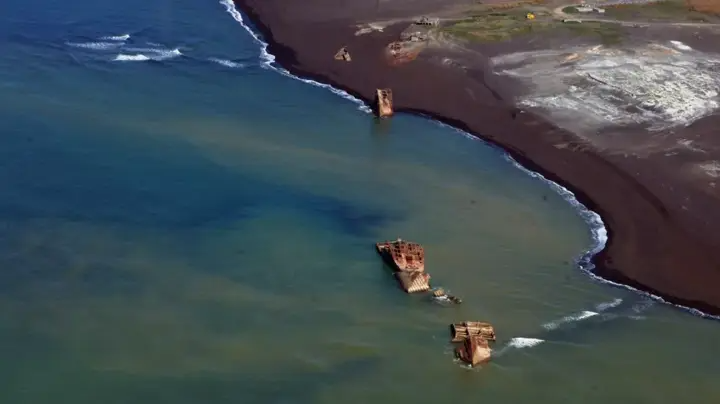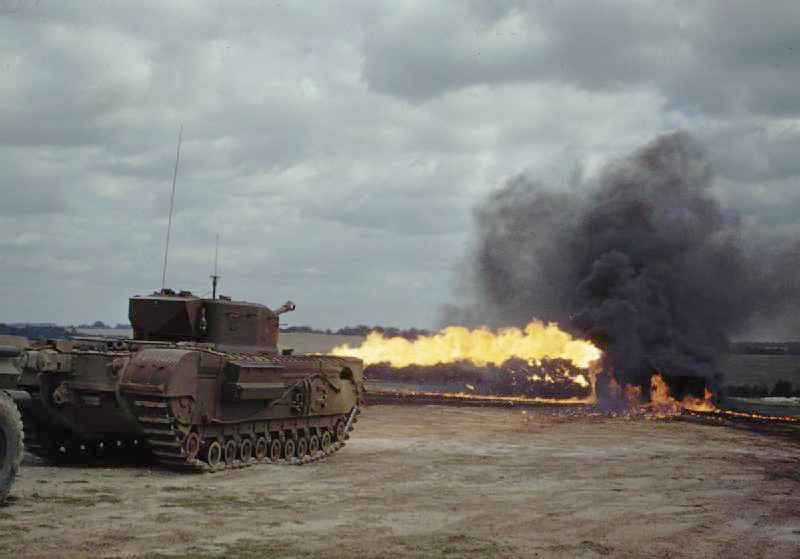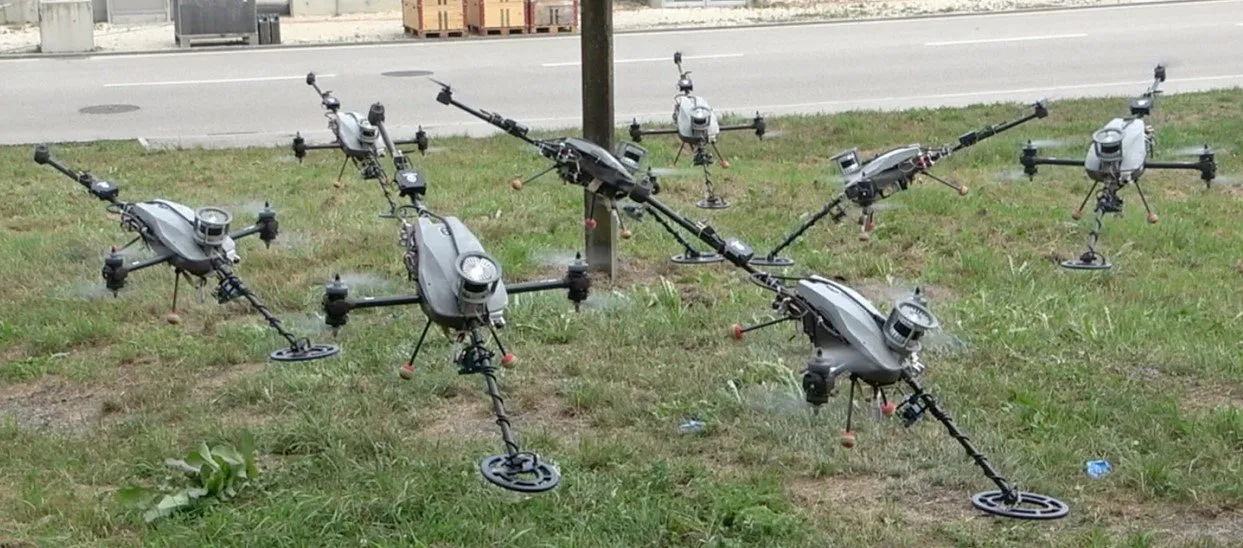Camouflage is an integral part of operational preparation in every modern military. However it wasn’t always like that. Some participants of the Second World War didn’t invest any time or energy into hiding their troops. Others became masters of deception.
In this article, we’ll be taking a look at the biggest forces of the Second World War and see exactly how they snuck past their enemies, made them shoot at the wrong targets, and see if remaining hidden in plain sight was a realistic option for these men.
- The United Kingdom
- Hiding from the Nazis
- Cott’s Gun
- Germany
- Japan
- The USSR
- The Russian Decoy
- France
- The USA
- US Navy
- How Effective was WWII Camouflage?
The United Kingdom
During the war, the British were investing more time and money into camouflaging vehicles, buildings, and other structures, than in camouflaging their own men.
The reason for this is twofold. First of all, most British soldiers fought in areas where camouflage, in the traditional sense of the word, wouldn’t do them much good.
At the time, army doctrine stated that only units with special duties needed camouflage. The thinking being it wasn’t helpful to most infantry troops, so the investment wasn’t necessary.
Read More: Hobart’s “Funnies” The (Curious) Tanks of WW2
In retrospect – that was mostly correct. A lot of the fighting took place in urban areas, where the best method of camouflaging was moving at night. During the day, it was very difficult to cover your movements.
In open areas, army-green uniforms were good enough at keeping the soldiers out of sight. Adding additional camouflage would only add more weight on the already-over encumbered men.

The uniforms worn in the North African campaign were tan, allowing them to adapt to the sandy background. The uniforms worn during the Battle of France, the Italian campaign, and the Liberation of Europe, were traditionally army green.
For most troops, nothing more than properly coloured uniforms was done regarding camouflage.
The second reason why the British camouflaged buildings and vehicles more than their troops, the examples of which we’ll see soon, is diversion.
During the Blitz, the British witnessed just how devastating the German Luftwaffe could be. This was immediately understood and they needed to either be destroyed or occupied.
In 1940, it was decided that everything had to be camouflaged. And by ‘everything’, the Army really meant everything. Every single building, vehicle, tent, and airfield needed to be protected from the Luftwaffe.
Hiding From the Nazis
They achieved this by painting hangars in a woodland pattern and adding fake hedges and forests. These were usually made from cardboard, around them. From above, the hangars would look like a forest thicket.
To mask the airfields, they would paint fake rural paths and add fake grasses. Even card bushes, and forests were added making them look like empty fields.
Rivers were also camouflaged. A portion of the river would be covered with a raised net that was painted in the same shade as the river. Boats would hide under the net until the danger had passed.
Read More: The Largest Battles of World War Two
In order to recognize the camouflage, a Luftwaffe pilot would have to drop dangerously low.
This didn’t always work, though, as the Luftwaffe had plenty of aerial surveillance photos that were taken before the camouflage was set up, so they already knew the layouts.

To mask bunkers and small buildings, they’d cover a huge net with small strips in the colour of the background (usually green). The net would create irregular patterns, nullifying the shape, shine, and shadow of the buildings, making them much more difficult to spot.
Cott’s Gun
Countershading techniques were presented by Hugh Cott, a zoologist who studied camouflage in animals. To test the technique’s effectiveness, the British painted one rail-mounted gun using his technique and painted another using their traditional camouflaging techniques.
Cott’s gun was bordering the invisible spectre from the air, while the traditionally painted gun was easily recognizable. Despite this revelation, the British Army wouldn’t implement Cott’s ideas in practice.
The authorities most likely didn’t adopt Cott’s technique because they were embarrassed by a zoologist knowing more about camouflage than experienced officers.
Painters and artists were hired to draw cars on the front sides of small bunkers. The hope was that German troops would walk to the bunker without actually knowing it’s a bunker.
Cardboard cut-outs of German troops were even put in front of buildings to make pilots and tank drivers think that they were shooting at their own troops.
At the time of implementation, these tactics were unexpected. It took the Germans a while to pick up on what was happening, so it’s only right to call them successful.
Germany
The difference between British and German troop camouflage in the Second World War is staggering.
The Germans had at least ten, but possibly more camouflage patterns that were used for both troops and large structures. Most of the patterns employed a disruptive pattern to break linear singularity, making the troops blend in with their environment.
Read More: Luger from WW2 Handed into the Police
This made the Germans hardly noticeable from a distance. That is provided that they were standing in front of a similarly coloured background.
Germans were also encouraged to add twigs and grasses to parts of their uniform, which just added another layer to how well-camouflaged they were.
It might not sound like much from where you’re sitting, but if you were a pilot, you most likely couldn’t spot German troops on the ground. If they laid down as they blended in perfectly.
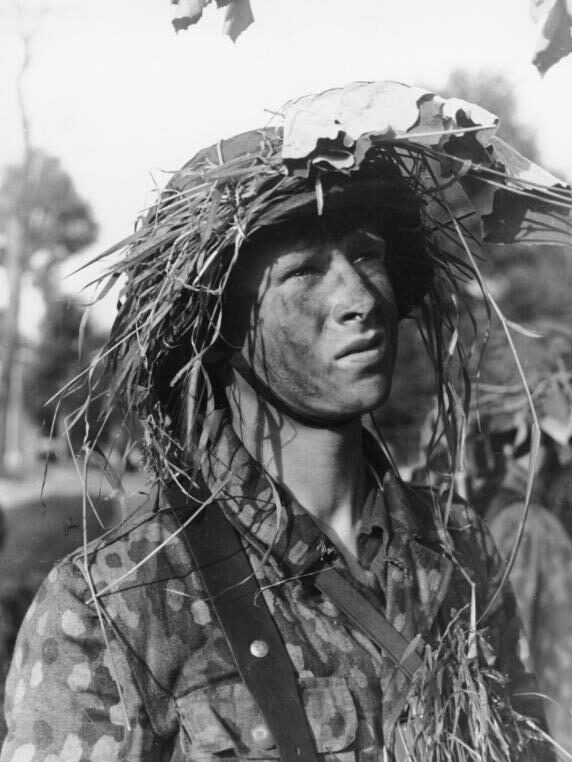
The same applies to infantry – you would have to get very close to the enemy to notice their shape.
The most famous of the patterns is the Splittertarnmuster – the splinter pattern. It was developed after studying the way light breaks in the forest in summer and autumn and it would provide great cover for German troops during the spring, summer, and autumn.
Camouflage sets were coloured according to the colours of the season. In winter, for example, they’d wear white jackets and helmet covers. Autumn sets were brown/copper and green.
The Splittertarnmuster has since been adopted and adapted for various environments and seasons by Bulgaria, Sweden, and Latvia.
Japan
Japan didn’t employ camouflage techniques to any degree similar to other World War II armies. Their snipers, however, were issued suits that were very similar to ghillie suits.
It’s assumed that they were based on traditional Japanese fishermen’s rainsuits. Natural materials, such as dried coconut tree fibre, were attached to the suit to help the soldiers blend in with the environment.
Read More: US Military Still Uses its Most Iconic of Weapons
Aside from that, army-wide camo wasn’t issued. Japanese uniforms were unicolor, but the soldiers would sometimes improvise camouflage by covering themselves with a net on which they would attach dry grasses and twigs.
The first army-wide camouflage pattern in Japan was issued in the mid-60s.
The USSR
The first camouflage pattern in the USSR was issued just before the Second World War. It was used by snipers, engineers, and reconnaissance units. The pattern uses an amoeba shape, which is why it’s often called the amoeba camouflage.
During the Winter War between Finland and the USSR, the Red Army was devastated by the Finnish, who were a well-masked army, hardly noticeable in the snow. Some Red Army troops wore white camo, but not all of them were issued white covers, so they were easy to spot in the whiteness.
Throughout the Second World War, the Soviets would produce three camouflage patterns. The summer pattern, designed to resemble dry twigs and leaves on green grass, was issued in 1941. As the name suggests, it was supposed to be during the ‘green’ seasons.
The design was successful, but it had to change in 1944 as the Germans started using infrared night vision to locate enemy troops. This pattern incorporated a three-colour pattern of dark green, light green, and light brown. It was used by isolated units, such as snipers, reconnaissance, and border units.
Towards the end of the war, a camouflage pattern combining all three designs was produced, but it didn’t see much combat as the war ended shortly after.
The Russian Decoy
Regarding deception on a greater scale, the Soviets employed methods similar to that of the British. In one instance, during the attack on Rhzev-Vyazma, they set up more than 800 fake tanks, guns, vehicles, and tents. They also used some real tanks to open fire and further convince the Germans that the troops were real.
Taking it even further, the Soviets used radios and transmitted fake conversations between the troops!

The Luftwaffe took notice, attacked, and the troops intensified fire from the few real guns they had, while the actual battle was more than 200 kilometres away.
German troops started moving their tanks towards the fake Soviet camp. They began fighting an essentially empty enemy camp, while the actual troops managed to cross 40 kilometres in two days mostly undisturbed.
This is just one of a few examples of Soviet deception. Later they used similar methods during the battles of Stalingrad, Kursk, and Operation Bagration.
The USSR has, on several occasions, successfully convinced the Germans that they had no troops or that they had a camp in place A, when they were actually in place B.
Read More: The Largest Battles of World War Two
Their camouflage methods were mostly either a hit or a miss, as there’s a plethora of examples when they didn’t work. This most likely depended on the officer conducting the operation.
Either way, the Soviets were very good at what they did, and some modern camouflage and deception methods are based on what they implemented.
France
French infantry uniforms were entirely army green, and they didn’t implement a camouflage pattern until after the Second World War.
Camouflage patterns were applied to all vehicles. Vehicles were originally army green, but they were covered with tan or very light green blotches. Patterns and colours depended on the unit itself and where they were at the time.
Some vehicles weren’t camouflaged before the war, so the soldiers themselves had to paint them once they were already in the field.
There were some factory-camouflaged vehicles, and since there were no colour-specific regulations regarding camouflage, the pattern itself depended on the manufacturer of the vehicle.
Therefore, patterns and colours used can differ from one vehicle to the other, despite belonging to the same army.
The French camouflage system was chaotic to say the least. There were no set rules for vehicle camouflage – the ones that weren’t factory-painted were freely painted by the units to which they belonged.
This is odd, as the French were the first ones to use vehicle and building camouflage in the First World War. For reasons unknown, this practice was neglected afterwards.
The USA
No branch of the US military had widely issued camouflage before the Second World War, although they did experiment with it during the First World War.
1942 marks the first use of camouflage – they used jungle camo when fighting the Japanese. The jungle pattern (tan and green) was developed by a horticulturalist, and it was worn by the Marine Corps.
Most of the Pacific Theatre fighting took place in areas that were densely populated with green vegetation, so this camouflage adapted well.
The European campaign didn’t see widespread use of camouflage. European terrain wasn’t as green, so they would have to switch to a brown-grey palette.
This, however, would make them look very similar to German troops! To avoid accidental friendly fire, US Army and Marines wore classic olive green uniforms.
Something the United States military deserves special credit for is the improvement of ship camouflage. To stay partly invisible on the horizon, the United States Navy started painting their ships.
Read More: Former WW2 Sniper Hit The Impossible 1,000-Yard Shot
This was similar to the British ‘Dazzle’ ships of WW1
Dark and light stripes would be painted diagonally. This would break the ship’s profile and make it more difficult to spot. Even if you did spot it, it would make it difficult to identify the ship.

Submarines found it especially difficult to identify ships that carried this pattern and many attacks were avoided because of this method.
Many improvements were made during the war, and the colour schemes went from blotching and stripes to unicolor patterns.
US Navy
The US Navy became the first military force to implement a system of colour schemes, each designated with a specific purpose. They were standardised and they would be reviewed after field testing.
Gray was found to be the most effective colour scheme, but the effectiveness depends on weather conditions and the colour of the water. When commanders assumed they’d face heavy air resistance, they would paint their ships blue.
This was proven to be an effective method during the Battle of Midway. Arguably the most important battle of the Pacific Theatre. Blue-painted ships came under less aeroplane fire than other ships. They were simply more difficult to spot at a distance from the air.
The findings and experiences of American sailors were later implemented not only by the US Navy, but by other navy forces around the world.
How Effective Was WWII Camouflage?
The effectiveness of World War II camouflage depended mostly on the unit implementing it. The Soviets are definitely the best example in this regard – at times, they managed to completely deceive the enemy through the use of camouflage.
If the officer in charge wasn’t creative and didn’t apply the method appropriately, though, Germans would see right through them.
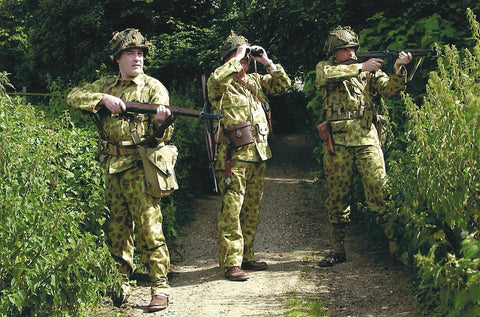
The British probably saved many lives by masking airfields, buildings, and vehicles. However, the enemy already had exact coordinates and air reconnaissance pictures of many targets. Camouflage simply couldn’t protect them from pre-existing knowledge.
When it comes to uniform camouflage, it’s safe to say that troops that wore camouflage were more difficult to spot than unicolor troops, if the conditions were right.
Read More: Point du Hoc – The Lost Battlefield
However, camouflage patterns didn’t make them disappear entirely.
Infantrymen and snipers had a tough time spotting appropriately camouflaged troops from a distance. The camouflage did a marvellous job hiding them from air reconnaissance and tank operators, but they could still be spotted if they stood close enough or if they found themselves in the wrong environment.
Lead image colourised by Pieces of Jake
Camouflage isn’t magic that can make something disappear. It has to be applied appropriately and in relation to friendly and enemy troop movements and searching methods.
That’s why World War II camouflage can’t be observed as a whole, but specific examples need to be picked apart and they can only be judged as individual cases.


